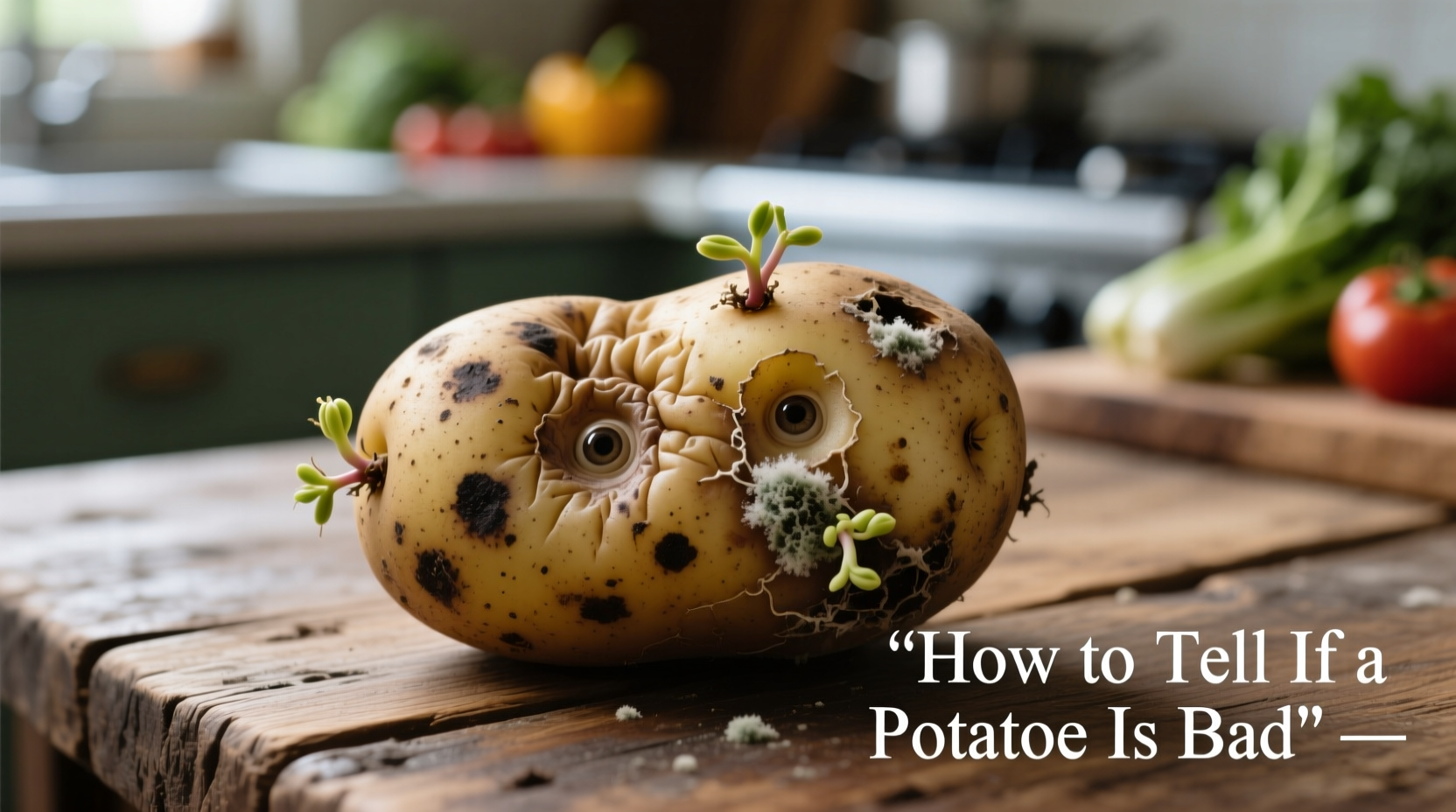If your potato has soft spots, mold, green patches, or a foul odor, it's gone bad and should be discarded. Potatoes with significant sprouting, wrinkling, or mushy texture are also unsafe to eat. When in doubt, throw it out to avoid potential foodborne illness.
Spot the Signs: Your Complete Guide to Identifying Bad Potatoes
Potatoes are kitchen staples, but they don't last forever. Knowing exactly how to tell if a potato is bad can save you from food poisoning and wasted meals. This guide gives you the practical knowledge to confidently assess potato freshness every time you reach into your pantry.Visual Indicators That Signal Spoilage
Your eyes are the first line of defense against bad potatoes. Here's what to look for:| Condition | Appearance | Action Required |
|---|---|---|
| Green patches | Areas turned green from light exposure | Peel deeply or discard if extensive |
| Mold growth | Fuzzy spots in white, green, or black | Discard entire potato immediately |
| Significant sprouting | Long sprouts emerging from eyes | Discard if sprouts exceed 1 inch |
| Wrinkling | Shriveled, leathery skin | Discard if accompanied by soft spots |
Sensory Clues You Can't Ignore
Beyond visual inspection, your other senses provide critical information:- Smell test: Fresh potatoes have an earthy, clean scent. A musty, moldy, or sour odor indicates bacterial growth and spoilage.
- Texture check: Gently squeeze the potato. It should feel firm throughout. Soft spots, mushiness, or sponginess means internal decay has begun.
- Surface examination: Run your fingers over the skin. Slimy or sticky residue is a clear sign of bacterial growth and means immediate disposal.
Understanding the Potato Spoilage Timeline
Potatoes don't go bad overnight. Understanding the progression helps you catch problems early:- Days 1-7: Ideal storage conditions maintain freshness with minimal changes
- Weeks 2-3: Initial sprouting may appear; potatoes remain safe if firm
- Weeks 4-6: Significant sprouting, possible slight softening at ends
- Weeks 6-8: Noticeable wrinkling, soft spots developing
- 8+ weeks: Advanced spoilage with mold, extensive softening, or foul odors
When Is a Sprouted Potato Still Safe?
Many home cooks wonder if they can salvage sprouted potatoes. The answer depends on multiple factors:- Small sprouts (under 1 inch) with firm texture: Peel deeply around sprouts and eyes, then use immediately
- Long sprouts with soft spots: Discard the entire potato
- Sprouts accompanied by green skin: Discard due to potential solanine concentration
Proper Storage Techniques to Maximize Freshness
Prevention beats detection. Follow these science-backed storage methods:- Store in a cool, dark place between 45-50°F (7-10°C)
- Use breathable containers like paper bags or mesh sacks
- Keep away from onions, which release gases that accelerate sprouting
- Never refrigerate raw potatoes (causes sweetening and texture changes)
- Check stored potatoes weekly and remove any showing early spoilage signs

Safety First: When to Definitely Discard Potatoes
Certain conditions mean immediate disposal is necessary:- Any visible mold growth (don't attempt to cut away)
- Strong unpleasant odors
- Multiple soft or mushy areas
- Extensive green discoloration
- Slippery or slimy surface texture
Extending Potato Shelf Life: Practical Tips
Maximize your potato investment with these professional techniques:- Store potatoes with an apple to reduce sprouting (apples release ethylene gas)
- Keep potatoes dry—never wash before storage as moisture accelerates decay
- Rotate your stock using the "first in, first out" principle
- Inspect potatoes before purchasing to avoid bringing compromised ones home
- Consider variety differences—russets typically last longer than fingerlings
Common Potato Myths Debunked
Let's address some widespread misconceptions:- Myth: "Green spots are just chlorophyll and harmless" Fact: Green indicates solanine production, a toxic compound
- Myth: "You can remove all toxins by peeling deeply" Fact: Solanine penetrates deep into the flesh—extensive greening requires full disposal
- Myth: "Refrigeration extends potato shelf life" Fact: Cold temperatures convert starch to sugar, altering taste and cooking properties
What to Do With Slightly Imperfect Potatoes
Potatoes showing early signs of aging but still firm can often be rescued:- Make roasted potatoes immediately—high heat destroys some surface bacteria
- Peel deeply to remove any questionable areas
- Use in soups or stews where texture matters less
- Consider making potato pancakes to use up smaller quantities











 浙公网安备
33010002000092号
浙公网安备
33010002000092号 浙B2-20120091-4
浙B2-20120091-4